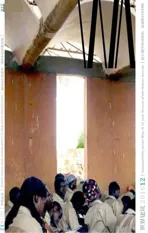可持续建筑的评价标准
2016-04-07
可持续建筑的评价标准
"Target Issues" for Sustainable Construction
拉法基豪瑞基金会确立的可持续建筑的5项评价指标对建筑在可持续发展中的作用进行量化评价。拉法基豪瑞可持续建筑基金会坚持可持续基本原则,主张建成环境的长期发展,要求制定负责任的经济、生态和社会议程,并做到相互平衡与协调。
为实现这一目标,拉法基豪瑞基金会及其合作大学确定了下述5项评价指标,旨在明确为后代保护人类栖居地的原则。 这些指标是对提交参加拉法基豪瑞奖的项目的遴选标准,也是基金会其他相关活动的路线图。
1 创新与可转移性——进步:
项目必须展现出可持续发展的创新方法,能够推动实践和探索新的学科前沿。突破和创造潮流的发现必须可以转移到其他应用。
·关于设计、材料和方法的集成、结构、围墙和机械系统的创新概念;
·对建筑技术和建造工艺、建筑运行和维护的杰出贡献;
·建筑学、城市与景观设计、民用、城市和环境工程、以及建成环境涉及的其他专业领域的进步;
·评估实现期望与目标的长期监测方法;
·传播知识,包括项目文件编制、沟通、宣传和培训。
2 道德标准与社会包容——人:
项目必须在建筑的各个阶段,从规划、建造到使用和维护,坚守最高的道德标准,促进社会包容;确保为社区带去长久的积极影响。推荐的项目必须证明它们如何增强社区团结。
·在项目的各个阶段坚守道德标准;
·利于形成社会环境、增强共同价值观和社区赋能;
·利益相关人的参与,包括用户、客户、当地政府和非政府组织;
·建筑行业工作条件(包括现场)的质量;特别关注公平薪酬、福利、安全和性别平等;
·政治透明度、公平流程与坚持有原则的互动和公正行为,目的是预防各级腐败。
3 资源与环境表现——地球:
项目必须在整个生命周期中展现出对自然资源的合理利用与管理。长期环境问题,特别是与存货、原料流动和能源有关的环境问题,应成为设计理念不可分割的一部分。
·将项目的生态足迹降至最小,将项目对环境的积极影响最大化;减少项目危害,增加项目效益;
·具有环保意识的土地使用战略和保护自然景观的政策,同时考虑到水土改良;
·重视建筑可再生能源的使用和建成建筑的使用与维护,减少CO2的排放和避免毒害;
·在建筑中创新使用原料资源,强调可持续发展理念,发掘现有的存量建筑和减少垃圾;
·有弹性的产品、稳健的建筑细节、建筑系统的智能交互与环保技术。
4 经济可行性与兼容性——繁荣:
项目必须具有经济可行性,能够获得融资(包括政府、商业或优惠贷款),并对社会和环境带来积极影响。避免浪费材料资源,建筑的经济效益得到提高。
·资金来源和利润必须合法、透明;
·项目应包含生命周期间的运营费用,并且产生不错的回报率;
·将项目融入当地、地区和全球资金流更广泛的经济框架中;
·展现出灵活性,能够适应未来用户需求、所有权关系、法律、法规和经济波动的变化;
·追求稳健的经济模式,从一开始就考虑到昂贵的外部成本。
5 环境与审美效果——地点:
项目必须传递出高标准的建筑质量并具有文化表现力。空间、外形和审美效果,设计的材料表现必须长期对物理和人文环境产生积极的作用。
·根据自然和建成环境改善现有的环境条件;
·景观、基础设施、城市结构和建筑的相互依赖;
·通过恢复、重复使用和重塑建成环境与特定建筑群很好地匹配;
·在使用、多功能性、短期灵活性和长期适应性方面有发明创造;
·建筑质量和审美效果,特别是在空间、空间序列、动态感、材料触感、光线和氛围方面。
The five "target issues" defined by the LafargeHolcim Foundation quantify the degree to which buildings contribute to sustainable development. The LafargeHolcim Foundation for Sustainable Construction is committed to the underlying principles of sustainability, which assert that long-term development of the built environment requires a balanced interplay of responsible economic, ecological, and social agendas.
To achieve this objective, the LafargeHolcim Foundation and its partner universities have identified five "target issues" that aim to clarify principles for sustaining the human habitat for future generations. These "target issues" serve as criteria for projects submitted for the LafargeHolcim Awards and as a road map for other related activities of the Foundation.
1 Innovation and transferability – Progress:
Projects must demonstrate innovative approaches to sustainable development, pushing the envelope of practice and exploring new disciplinary frontiers. Breakthroughs and trend-setting discoveries must be transferable to a range of other applications.
· Innovative concepts regarding design, integration of materials and methods, structure, enclosure and mechanical systems.
· Outstanding contributions to construction technologies and building processes, operation and maintenance.
· Advancements in the disciplines of architecture, urban and landscape design, civil, urban and environmental engineering, and other fields involved in the production of the built environment.
· Long-term monitoring methods to evaluate whether expectations and goals have been met.
· Dissemination of knowledge, including project documentation, communication, education and training.
2 Ethical standards and social inclusion – People:
Projects must adhere to the highest ethical standards and promote social inclusion at all stages of construction, from planning and building to use and servicing; to ensure an enduring positive impact on communities. Proposals must demonstrate how they enhance the collective realm.
· Adherence to ethical standards in all phases of the project.
· Contributions to the formation of socially-viable environments, strengthening of shared values and empowerment of communities.
· Participation of stakeholders, including users, clients, neighborhood affiliations, local authorities and non-governmental organizations.
· Quality of working conditions in the construction industry and including on site; with specific attention given to fair compensation, adequate benefits, safety and gender equality.
· Political transparency, unbiased processes and commitment to principled interaction, just practices, all in the effort to prevent corruption at every level.
3 Resource and environmental performance –Planet:
Projects must exhibit a sensible use and management of natural resources throughout their entire life cycle. Long-term environmental concerns, especially pertaining to stocks and flows of material and energy, should be an integral part of the design philosophy.
· Minimizing a project's ecological footprint and maximizing its positive impact on the environment; reduction of harm and increase of beneficial effects.
· Environmentally-conscious land use strategies and policies that preserve the natural landscape, while taking water and land reclamation into account.
· Emphasis placed on the use of renewable energy in construction, use and upkeep of the built fabric to reduce CO2emissions and avoid toxicity.
· Innovative deployment of material resources in construction with an emphasis on cradle to cradle cycles, mining existing building stocks and reduction of waste.
· Resilient products, robust construction details, smart interaction of building systems and environmentally sound technologies.
4 Economic viability and compatibility –Prosperity:
Projects must be economically feasible and able to secure financing – whether from public, commercial, or concessional sources – while having a positive impact on society and the environment. Avoiding the wasteful consumption of material resources, an economy of means in construction is to be promoted.
· Funding sources and profits earned must be legitimate and transparent.
· Projects should cover operating costs over their lifetime and generate an acceptable rate of return.
· Integration of the project into the wider economic framework of local, regional, and global monetary flows.
· Demonstrate flexibility to adapt to future changes of user needs, ownership, laws, regulations, and economic fluctuations.
· Robust economic models are sought that take unpriced external costs into consideration from the outset.
5 Contextual and aesthetic impact – Place:
Projects must convey a high standard of architectural quality as a prevalent form of cultural expression. With space, form and aesthetic impact of utmost significance, the material manifestation of the design must make a positive and lasting contribution to the physical, human and cultural environment.
· Improvement of existing contextual conditions responding to the natural and built environment.
· Interdependencies of landscape, infrastructure, urban fabric and architecture.
· Working with the given building stock through sensitive restoration, re-use or re-modeling of the built environment.
· Inventive programming strategies in terms of use, multiplicity of functions, short-term flexibility and long-term adaptability.
· Architectural quality and aesthetic impact, specifically concerning space, spatial sequences, movement, tactility of materials, light and ambiance.
